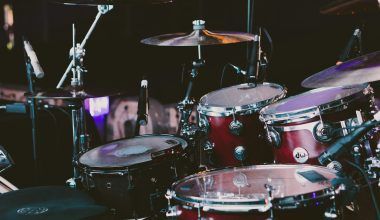The music industry has always been an evolving beast, constantly reshaped by new trends, technology, and cultural shifts. But right now, we’re standing at a massive crossroads—where generative AI meets the creative heart of music. It’s not just about beats and rhythms anymore; it’s about how music is made, shared, and consumed in this digital-first world. Let’s talk about what’s happening, how AI-generated music is shaking things up, and what it all means for creators like you.
AI-Generated Music: Game-Changer or Game-Over?
Generative AI isn’t just a buzzword anymore; it’s everywhere. Tools like Beatoven.ai and Suno.ai are turning music creation into something you can do with a few clicks—literally. Want a track? Just type in your vibe, and boom, you’ve got a beat. Sounds cool, right? But here’s the flip side: these AI models often use existing music to train their algorithms, raising some big-time copyright concerns.
Picture this: by 2028, the market for AI-generated music and audiovisual content is expected to explode from €3 billion to a jaw-dropping €64 billion. At the same time, AI services in music and video are projected to rake in €9 billion, up from just €0.3 billion today. While that’s all exciting for tech enthusiasts, it’s raising alarm bells for traditional music creators, who risk losing up to 24% of their revenue to AI-generated works. That’s a chunk too big to ignore.
Music Industry Strikes Back: A Royalties Comeback
It’s not all doom and gloom, though. Live performance royalties saw a massive 22% jump in 2024, showing that audiences are still loving the magic of live music. Globally, royalty collections hit €13.1 billion, with digital platforms now dominating the revenue pie at 35% of total collections. These numbers are proof that intellectual property (IP) remains the backbone of the music industry, and protecting it is more important than ever.
The Rise of International Collabs: A Global Playlist
Let’s not forget the power of cross-border collabs. Initiatives like the KOLAB Indo-Korean music project are pushing boundaries and creating bangers that blend cultures. But with global partnerships come global challenges, especially when it comes to copyright. A unified international framework is the need of the hour to ensure that everyone—from indie artists in Mumbai to K-pop stars in Seoul—gets their fair share.
AI’s Double-Edged Sword: Challenges and Opportunities
AI in music production is both a blessing and a headache. Sure, it’s making music creation faster and more accessible, but it’s also raising questions about quality, originality, and the very essence of human creativity. Imagine a world flooded with low-quality AI-generated tracks. Scary, right? But on the flip side, AI can also improve licensing, royalty distribution, and music recognition systems, making the process fairer and more transparent for everyone.
What About Copyright? The Big Question
If we’re talking about AI-generated music, we’ve got to talk about copyright. Recent lawsuits against AI companies for using copyrighted materials without permission are just the beginning. Policymakers need to step up their game and create clear rules for how AI can and can’t use existing works. Without strong regulations, we’re looking at a chaotic future where creators might struggle to protect their work and earn a living.
Rights Management to the Rescue
Enter advanced tech tools like automated recognition systems. These bad boys can help track and manage copyrights more efficiently. Think of it as Shazam on steroids—recognizing songs and ensuring royalties go to the right people, whether the track was created by a human or an AI. Rights management organizations are likely to lean heavily on such technologies to keep things fair and transparent.
The Bigger Picture: The Future of Music Industry Revenue
Looking ahead, the focus needs to be on creating sustainable revenue models that work for both AI-generated and human-created music. With AI-based music services projected to hit €9 billion in revenue by 2028, the stakes are high. But this doesn’t have to be a zero-sum game. AI can complement traditional music revenue streams, offering new opportunities for income rather than replacing the old ones.
Keeping It Real: Balancing Innovation and Creativity
The trick is finding a balance. We need to embrace the efficiency and innovation AI offers while safeguarding the cultural and emotional value of human artistry. It’s not just about making more music; it’s about making music that matters.
Wrapping It Up: Key Takeaways
So, what’s the big picture? Here are the key points to keep in mind:
- Live performance royalties are booming, with a 22% increase in 2024, proving the resilience of live music.
- AI-generated music is here to stay, but it’s a double-edged sword with potential risks to copyright and creator revenues.
- Global royalty collections reached €13.1 billion, with digital platforms leading the charge.
- Cross-border collaborations are thriving, but they need stronger copyright protections.
- Advanced tech like automated recognition systems can revolutionize rights management and royalty distribution.
- Policymakers need to act fast to create fair regulations for AI in music.
- The future of music industry revenue depends on sustainable models that balance AI and human creativity.
The music industry is evolving faster than ever. Whether you’re a creator, a listener, or a stakeholder, it’s up to all of us to shape a future where music—human or AI-generated—continues to inspire and connect us.
For additional resources on music industry updates, marketing and music distribution, visit Deliver My Tune.






